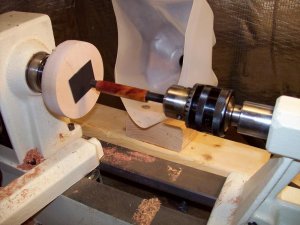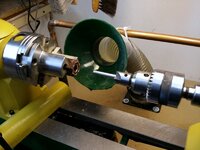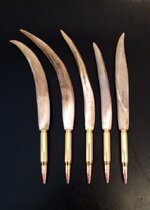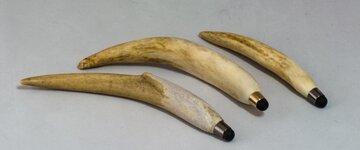RustySocket
Member
- Joined
- Feb 7, 2016
- Messages
- 51
I'm slowly acquiring equipment for my penmaking and other small woodworking projects.
I now have my lathe and a small bandsaw. Up to this point Ive been using trimmers in a drill to square my blanks and it works well for the most part.
I have had a couple of incidents where I got too aggressive and the trimmer ripped wood rather than cut. Also I am starting to want to try some resin / acrylic blanks.
I think Im at the point where I'd like to get a disk/belt sander combo. I do realize I could get a PSI plate and jig for my lathe but I'd like to be able to have a dedicated piece of equipment for other projects like small boxes.
I am comfortable with a budget around 150$
I can get one from Harbor Freight for around 60$ and I do have a local store to inspect it at as I know quality can be hit/miss.
I have a coupon for this one 4 x 36"
I also am looking at a WEN 6502 from Amazon which runs about 110$. Both Rikon and Rockwell make ones that are nearly identical but I like the belt guard on the WEN better.
I know I also need to make or buy a jig to mount on the sander to square the blank.
I'm not brand loyal so I'm interested in what others are using and if I should be looking at anything else feature wise. It wont be put to hard use but I don't want junk. I'm leaning towards the WEN at this point due to the more powerful motor, higher rpm, and safer looking belt guard.
Let me know your thoughts and opinions.
I now have my lathe and a small bandsaw. Up to this point Ive been using trimmers in a drill to square my blanks and it works well for the most part.
I have had a couple of incidents where I got too aggressive and the trimmer ripped wood rather than cut. Also I am starting to want to try some resin / acrylic blanks.
I think Im at the point where I'd like to get a disk/belt sander combo. I do realize I could get a PSI plate and jig for my lathe but I'd like to be able to have a dedicated piece of equipment for other projects like small boxes.
I am comfortable with a budget around 150$
I can get one from Harbor Freight for around 60$ and I do have a local store to inspect it at as I know quality can be hit/miss.
I have a coupon for this one 4 x 36"
I also am looking at a WEN 6502 from Amazon which runs about 110$. Both Rikon and Rockwell make ones that are nearly identical but I like the belt guard on the WEN better.
I know I also need to make or buy a jig to mount on the sander to square the blank.
I'm not brand loyal so I'm interested in what others are using and if I should be looking at anything else feature wise. It wont be put to hard use but I don't want junk. I'm leaning towards the WEN at this point due to the more powerful motor, higher rpm, and safer looking belt guard.
Let me know your thoughts and opinions.
Last edited:




